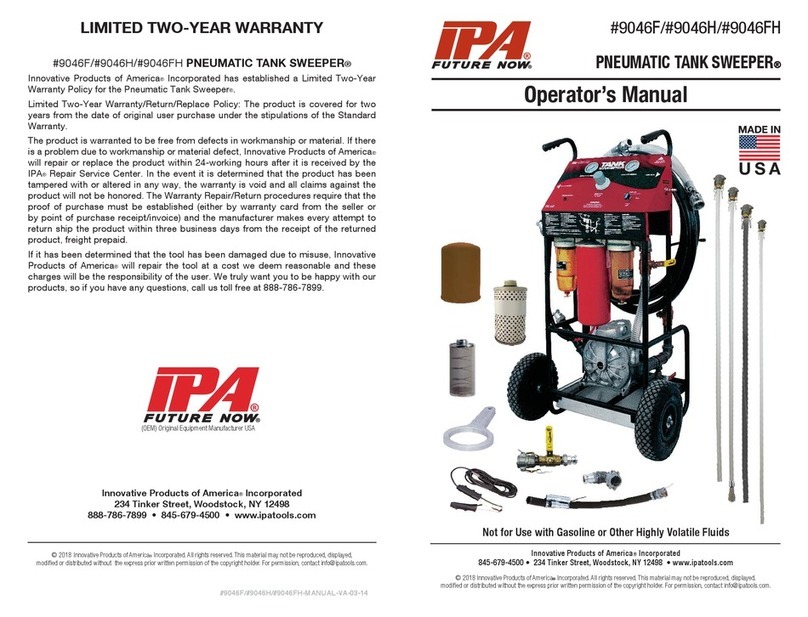7
#9042 Fuel
Sample Stick
from the bottom of a fuel tank so the operator can see what
contaminants are present.
TO OPERATE:
1. Insert the Sample Stick through one of the cap openings at the top
of the tank all the way until it contacts the bottom of the tank.
2. Slowly withdraw the piston via the handle until the desired amount
of fuel is drawn into the sample stick.
3. Remove the Sample Stick from the tank keeping an oil absorbent
towel ready. Allow the sample stick to drip drain into the towel.
4. Have a suitable container made of glass or material that will not be
affected by the fuel oil, ready for the sample fuel oil.
5. Slowly withdraw the piston until it is removed completely
from the sample tube. Place the piston on a towel to drip
drain.
6. Pour the remaining contents of the sample tube into the sample jar.
7. Once the sample is in the jar, let it sit for 24 hours to separate the
contents. The water will settle to the very bottom with rust, then
algae, and then the crude. The clear oil will be on top. This should
be a real time view of what is happening at the bottom of the oil
tank.
8. Once the sample has been taken, you must replace the piston in
the sample stick tube. Because of the one way valve at the bottom
of the foot valve, there will be a pressure block as you attempt to
replace the piston. You need to break the suction seal by
unscrewing the foot valve two turns counter clockwise. This allows
the air to escape and the piston to be replaced. Once the piston
reaches the bottom of the tube, you must retighten the foot valve.
Be certain not to over-tighten the O-ring. A snug torque of the foot
valve halves is all that is needed.
Cleaning of the Sample Stick after use is necessary to maintain its
clear appearance. When ready, allow the Sample Stick to gravity-
drain the oil. Once the stick has been drained, a solution of warm
soapy water should be used to flush the stick a few times until clean.
NOTE: The tube of the Sample Stick is made of a clear acrylic
material. The Sample Stick should not be used for gasoline, ONLY
OIL!




























